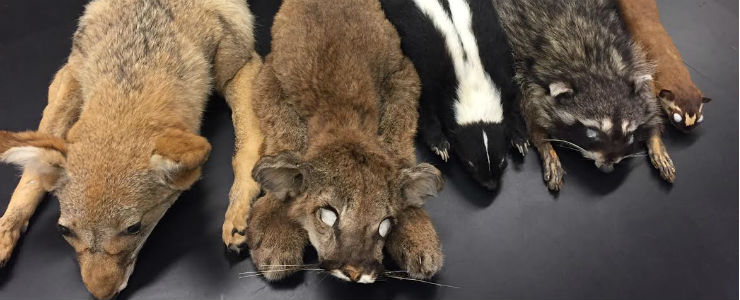Carnivora: Carnivorans
Infraclass: Placentals
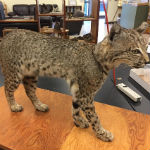 Family: Felidae (Cats)
Family: Felidae (Cats)
The Felidae family is made up of the subgroups small cats and large cats. Most felids are adept climbers and swimmers who live a solitary life. They are morphologically specialized hunters, usually only eating carrion that they killed by themselves.
Pictured: Lynx rufus (Bobcat)
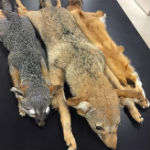 Family: Canidae (Dogs)
Family: Canidae (Dogs)
Canids are distributed worldwide on all continents except Antarctica. Coyotes, dogs, foxes, jackals, and wolves make up the Canidae family and are very opportunistic and omnivorous for carnivores. Most species of canids hunt and live in packs with strict social hierarchies.
Pictured (left to right): Urocyon cinereoargenteus (Gray Fox), Canis latrans (Coyote), Vulpes vulpes (Red Fox)
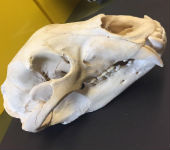 Family: Ursidae (Bears)
Family: Ursidae (Bears)
Bears represent the small Ursidae family and are found on all continents except Antarctica and Australia. Ursids are omnivorous and opportunistic, which means they'll eat anything they can get their hands on. They live solitary lives and are generally nocturnal.
Pictured: Ursus americanus skull (American Black Bear)
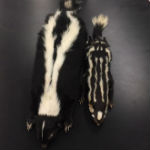 Family: Mephitidae (Skunks & Stink badgers)
Family: Mephitidae (Skunks & Stink badgers)
The Mephitidae family includes all skunks and stink badgers. They are mainly omnivorous, nocturnal, and reside in range of different habitats. All mephitids have anal scent glands that produce a noxious odor for protection against predators.
Pictured (left to right): Mephitis mephitis (Striped Skunk), Spilogale gracilis (Western Spotted Skunk)
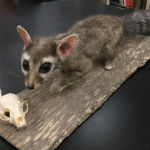 Family: Procyonidae (Raccoons & Relatives)
Family: Procyonidae (Raccoons & Relatives)
Raccoons make up the Procyonidae family with 18 different species in 6 genera, including the red panda. Their diet is omnivorous, resulting in a lack of large carnassial teeth which are adapted to tear flesh. The common raccoon (Procyon lotor) inhabits cosmopolitan areas, living closely with humans.
Pictured: Bassariscus astutus skin and skull (Ringtail)
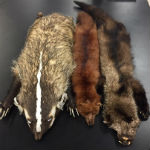 Family: Mustelidae (Badgers, Weasels, Otters & Relatives)
Family: Mustelidae (Badgers, Weasels, Otters & Relatives)
The Mustelids are the largest family in the Carnivora order with 56 species, including; badgers, weasels, otters, and relatives. Members live in diverse habitats ranging from terrestrial to aquatic/marine environments.
Pictured (left to right): Taxidea taxus (American Badger), Neovison vison (American Mink), Martes pennanti (American Fisher)
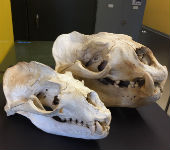 Family: Otariidae (Sea Lions & Fur Seals)
Family: Otariidae (Sea Lions & Fur Seals)
Otariids consist of sea lions and fur seals, who have small, cartilaginous (made of cartilage) external ears. They have large hind flippers that rotate under the animal when on land that help in locomotion. They are highly social and form large herds during the breeding season.
Pictured (left to right): Zalophus californianus (California Sea Lion), Eumetopias jubatus (Steller Sea Lion)
 Family: Phocidae (Earless Seals)
Family: Phocidae (Earless Seals)
The Phocidae family includes all earless seals, who have very small forelimbs. The social structures of phocids vary among species. Elephant seals (Mirounga angustirostris), for example, are polygymous and highly gregarious with large sexual dimorphism.
